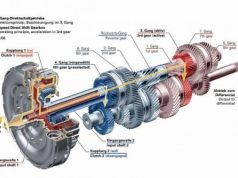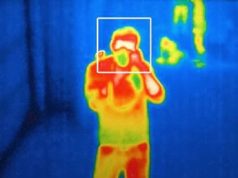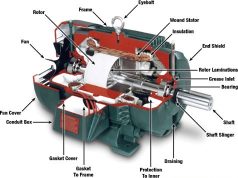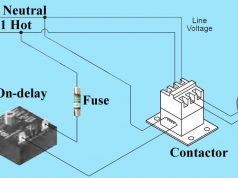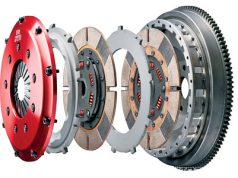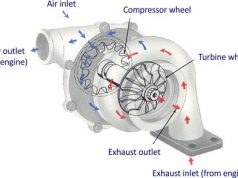BẢO TRÌ TINH GỌN (LEAN MAINTENANCE)
———-
Rào cản của tinh gọn
Những lo lắng của các nhà quản lý:
Có giảm lượng tồn kho phụ tùng được không ?
Có giảm chi phí cho đào tạo, nhân sự, phụ tùng được không ?
Có nên thuê dịch vụ bảo trì từ bên ngoài hay không ?Vấn đề bảo trì
– Hai yếu tố chính là: độ tin cậy của máy và thời gian hoạt động tốt của máy.
– Giải pháp là tìm các cách thức để loại bỏ thời gian ngừng máy không kế hoạch.
– Phần lớn người bảo trì đều nghĩ rằng khi nào máy ngừng thì mình sửa nó.
– Vấn đề là chúng ta có thể giám sát, đo lường, kiểm tra, theo dõi, báo cáo về tình trạng máy, nhưng thời gian ngừng máy sẽ vẫn tồn tại nếu chúng ta không tìm cách loại trừ đi, nghĩa là ngăn ngừa để khỏi xảy ra ngừng máy.
Một giải pháp (Bảo trì tinh gọn)
– Để ngăn ngừa ngừng máy chúng ta phải loại trừ những nguyên nhân gây ra ngừng máy.
– Cần có một phương pháp luận bảo vệ máy tính, các bộ điều khiển, PLC, CNC, các hệ thống cơ khí, thủy lực, khí nén tránh những nguyên nhân gây ra vận hành sai và hư hỏng.
Tác giả phương pháp này đã áp dụng và hoàn thiện nó từ năm 1977. Ông gọi phương pháp này là “Bảo trì Tinh gọn cho Sản xuất tinh gọn” (“Lean Maintenance™ for Lean Manufacturing”). Phương pháp hiệu quả và thực tiễn này có thể giúp ích cho các doanh nghiệp viễn thông, y tế, cơ khí, điện tử, nhựa, v.v… Trong vòng 30 ngày các bạn có thể tránh vận hành sai, hư hỏng máy, ngừng máy ngoài kế hoạch, phế phẩm, tái chế, lỡ thời hạn giao hàng, v.v.. Và đạt gần như là 100% độ tin cậy, năng suất, thời gian máy hoạt động cần để sản xuất và gia tăng lợi nhuận.
1. Có sẳn phụ tùng thay thế,
2. Sửa chữa, phục hồi tại chỗ các trường hợp hư hỏng,
3. Có sẳn các kỹ thuật viên, kỹ sư bảo trì, …
Mục tiêu của bảo trì tinh gọn là:
– Giảm 50 % thời gian ngừng máy của hệ thống cơ khí.
– Giảm 80 % thời gian ngừng máy của hệ thống thủy lực.
– Giảm 92 % thời gian ngừng máy của hệ thống điện tử.
Chi phí ngừng máy
– Một giờ ngừng máy mất bao nhiêu (triệu đồng) ?
– Một giờ ngừng một nhóm (dây chuyền) máy mất bao nhiêu (triệu đồng) ?
– Một giờ ngừng hoạt động của toàn bộ nhà máy mất bao nhiêu (triệu đồng) ?
Tổng chi phí ngừng máy (tr. đ) = Chi phí cho phụ tùng hư hỏng + Chi phí cho các sai sót khi bảo trì + (Chi phí một giờ ngừng máy x số giờ ngừng máy)Chỉ khi nào các bạn nắm được chi phí ngừng máy thì bạn mới xác định được tầm quan trọng và tác động của các phương pháp bảo trì tinh gọn (BTTG).
Bảo trì tinh gọn – Phương pháp luận+ Mục tiêu chính của BTTG là làm cho máy móc, thiết bị của công ty chạy ổn định 100 % đồng thời giảm ít nhất 50 % chi phí bảo trì.+ Muốn vậy cần điều tra và phân tích có hệ thống từng máy và hệ thống để xác định những nguyên nhân gốc rễ nào gây ra trực trặc, hư hỏng cho máy, từ đó vạch ra những trình tự, giải pháp, sơ đồ … bảo vệ máy tránh khỏi các nguyên nhân này.
Có ba loại thời gian ngừng máy:
1. Ngừng máy do sai sót của người vận hành hoặc người lập trình.
2. Ngừng máy do qui trình bảo trì phòng ngừa không đúng, khơng thích hợp.
3. Ngừng máy do hư hỏng gây ra bởi các nguyên nhân như: nhiệt, rung động, ăn mòn hóa học, mài mòn cơ học, đóng bụi, quá điện áp hoặc dòng điện, nhiễm bẩn bụi, nước, acid, tạp chất trong hệ thống thủy lực, v.v..
Sáu Sigma, ISO-9000 và TPM thường đề cập đến hai vấn đề đầu tiên. Còn BTTG nhấn mạnh tầm quan trọng của cả ba và tập trung vào vấn đề thứ ba.
Ví dụ đơn giản như sau:
Chúng ta có thể trữ nhiên liệu ở đâu đó nhưng phải tránh nguồn nhiệt và ôxy. Được như vậy thì có thể tránh bị hỏa hoạn.
Tương tự như vậy, nếu chúng ta có thể loại trừ các nguyên nhân gây ra hư hỏng trong công tác bảo trì thì sẽ không xảy ra vận hành sai, lầm lẫn, khuyết tật, sửa chữa, phục hồi và ngừng máy.
• Các bước thực hiện BTTG – DMAIC
• Bước 1: Xác định vấn đề (Define the problem):
Máy móc là những công nhân có năng suất cao của một doanh nghiệp.
• Thường máy móc có “lương” cao hơn con người.
• Khi máy móc bị ngừng, doanh nghiệp bị mất doanh thu và lợi nhuận.
• Vì vậy cần xác định rõ sự việc, vấn đề xảy ra.
Bước 2: Giám sát và đo lường vấn đề (Monitor & Measure the problem):
Giám sát thời gian ngừng máy và đo, tính chi phí , tổn thất do ngừng máy.
Nếu chúng ta có một hệ thống Quản lý bảo trì bằng máy tính CMMS (computer maintenance management system) hoặc một hệ thống quản lý cung ứng và phiếu bảo trì tốt thì có thể tính được tiềm năng tiết kiệm và lợi nhuận thu được nếu tránh được các hư hỏng xảy ra. Cần đo và báo cáo những vấn đề sau đây (trong năm qua):
1. Bao nhiêu Phiếu yêu cầu bảo trì cho những lần ngừng máy không kế hoạch mà bạn đã có trong vài tháng qua, trong năm qua ?
2. Bao nhiêu giờ ngừng máy không kế hoạch ? Bao nhiêu giờ bảo trì được thực hiện bởi người của nhà máy hoặc của bên ngoài ? Bao nhiêu giờ ngừng máy do hệ thống cơ khí, thủy lực, điện bị hư hỏng ?
3. Bao nhiêu đồng đã được chi cho việc sửa chữa máy móc?
4. Bao nhiêu chi phí để sửa chữa các bộ phận điện tử (nội bộ và thuê ngoài) ?
5. Bao nhiêu chi phí để sửa chữa các bộ phận thủy lực (nội bộ và thuê ngoài) ?
6. Bao nhiêu chi phí cho dầu thủy lực ?
7. Bao nhiêu chi phí để xử lý dầu thủy lực phế thải?
8. Có bao nhiêu hệ thống thủy lực?
9. Có bao nhiêu máy hay hệ thống điều khiển bằng PLC/ máy tính được sử dụng ở nhà máy ?
10. Những khu vực hoặc các máy móc, thiết bị nào cần phải hết sức quan tâm ?
11. Chi phí/ tổn thất/ thiệt hại do một giờ ngừng máy tại bộ phận/ dây chuyền/ nhà máy là bao nhiêu?
12. Nhân chi phí mỗi giờ ngừng máy với tổng số giờ ngừng máy ở mục 1 và 2.
Nếu bạn loại trừ được 70% – 92% mục số 12 thì có đáng để bạn và công ty quan tâm không ?
Bước 3: Phân tích làm thế nào để giải quyết hoặc loại trừ vấn đề này (Analyze how to solve or eliminate the problem):
Kỹ sư bảo trì của công ty, hoặc chuyên gia tư vấn sẽ phân tích và xác định đối với mỗi máy, thiết bị giải pháp bảo vệ máy có hiệu quả nhất để tránh các nguyên nhân nêu trên.
Nên yêu cầu họ viết báo cáo chi tiết, theo từng máy, cách thức bảo vệ máy, thiết bị, dụng cụ cần thiết, những chỉ dẫn lắp đặt chi tiết, dự toán chi phí thực hiện. Quyết định có đầu tư hay không phụ thuộc vào đánh giá của chúng ta khi so sánh lợi ích nhờ thời gian ngừng máy giảm và lợi nhuận gia tăng như được đề cập ở mục số 12
• Lắp đặt và thực hiện (Install and Implement)
• Những chỉ dẫn lắp đặt nêu trên phải chi tiết, cụ thể để nhân viên bảo trì của chúng ta có thể lắp đặt dễ dàng và nhanh chóng những thiết bị, phương pháp, linh kiện, v.v…
• Kiểm soát dự án (Controlling this project)
• Kiểm soát BTTG không cần nhiều cố gắng. Các bước thực hiện để tránh vận hành sai hệ thống thủy lực và thời gian ngừng máy có thể giảm trong thực tế đến 90 % lao động thực hiện công việc bảo trì phòng ngừa và phục hồi, đồng thời kéo dài tuổi thọ của máy.
• Công ty Amemco có thể giúp triển khai Chươngtrình Bảo trì Tinh gọn trong vòng 30 ngày.
• Chương trình đầu tiên mất 5 năm.
• Lần thứ hai cần 2 năm.
• Sau đó rút xuống còn 3 -6 tháng.
• Bây giờ sau 25 năm kinh nghiệm chúng tôi đã giúp khách hàng nâng cao đến mức tối đa thời gian máy hoạt động, độ tin cậy, năng suất và lợi nhuận trong vòng 30 ngày.
• Amemco tiến hành điều tra và phân tích nhà máy và thiết bị của quý vị. Chúng tôi bắt đầu bằng một hội thảo chuyên đề về Bảo trì tinh gọn tại nhà máy trong ba giờ cho mọi người có liên quan từ lãnh đạo bộ phận sản xuất đến các kỹ sư và kỹ thuật viên bảo trì. Chuyên đề này sẽ trình bày những căng thẳng do hư hỏng, ngừng máy gây ra như thế nào và các phương pháp của chúng tôi sẽ loại bỏ những căng thẳng này ra sao.
Chúng tôi cũng thảo luận và xem xét những bất thường gây ra ngừng máy ngoài kế hoạch ở nhà máy. Chúng tôi sẽ khảo sát, điều tra về thời gian ngừng máy, độ tin cậy của thiết bị trong vòng 2 – 4 ngày, ghi nhận các số liệu về máy và thiết bị, sau đó làm báo cáo chi tiết khoảng 20 – 30 trang về một loạt các giải pháp bảo vệ cho mỗi máy và hệ thống điều khiển.
• Kết luận
• “Bảo trì Tinh gọn” nhằm làm giảm đáng kể hư hỏng gây ngừng máy và đình trệ sản xuất. Bảo trì Tinh gọn nhằm bảo vệ máy, phòng tránh các nguyện nhân gốc rễ/ thực sự gây ngừng máy chứ không phải chỉ là triệu chứng. Bất kỳ kỹ sư hoặc nhà quản lý bảo trì nào đều có thể bắt đầu Bảo trì Tinh gọn bằng cách bảo vệ các thiết bị điều khiển, tự động hóa, thủy lực, khí nén, v.v… tránh các nguyên nhân gốc rễ gây ra vận hành sai, hư hỏng, ngừng máy như đã nêu trên. Hư hỏng bo mạch, hệ thống thủy lực và vận hành sai sót chỉ là triệu chứng chứ không phải là nguyên nhân nằm sâu phía dưới các hiện tượng ngừng máy ngoài kế hoạch.
• Hơn 25 năm kinh nghiệm, Amemco biết cách giúp các công ty khách hàng thực hiện Bảo trì Tinh gọn trong vòng 30 ngày thay vì phải mất nhiều năm. Nghĩa là:
• 1. Làm tăng lợi nhuận,
• 2. Đảm bảo gần 100 % thời gian máy hoạt động để Sản xuất Tinh gọn,
• 3. Giảm đáng kể chi phí bảo trì trực tiếp và gián tiếp,
• 4. Giảm sự phụ thuộc vào dịch vụ hỗ trợ bảo trì bên ngoài.
Bảo trì Tinh gọn giúp đạt được tối đa thời gian máy hoạt động, sản lượng, năng suất và lợi nhuận.
WHAT IS LEAN MAINTENANCE?
Elements that need to be in place for successMuch has been written about lean manufacturing and the lean enterprise—enough that nearly all readers are familiar with the concepts as well as the phrases themselves. But what about lean maintenance?
Is it merely a subset of lean manufacturing? Is it a natural fall-in-behind spinoff result of adopting lean manufacturing practices? Much to the chagrin of many manufacturing companies, whose attempts at implementing lean practices have failed ignominiously, lean maintenance is neither a subset nor a spinoff of lean manufacturing. It is instead a prerequisite for success as a lean manufacturer. This article will explain why.
The definition
The best starting point is to define lean maintenance:
Lean maintenance is a proactive maintenance operation employing planned and scheduled maintenance activities through total productive maintenance (TPM) practices using maintenance strategies developed through application of reliability centered maintenance (RCM) decision logic and practiced by empowered (self-directed) action teams using the 5S process, weekly Kaizen improvement events, and autonomous maintenance together with multi-skilled, maintenance technician-performed maintenance through the committed use of their work order system and their computer managed maintenance system (CMMS) or enterprise asset management (EAM) system. They are supported by a distributed, lean maintenance/MRO storeroom that provides parts and materials on a just-in-time (JIT) basis and backed by a maintenance and reliability engineering group that performs root cause failure analysis (RCFA), failed part analysis, maintenance procedure effectiveness analysis, predictive maintenance (PdM) analysis, and trending and analysis of condition monitoring results.
That is lean maintenance in a nutshell, albeit a rather large nut (except for a few details that were omitted here but will be covered later in the article). Let’s discuss the highpoints of this definition to be sure everyone understands the terms used:
• Proactive. This is the opposite of reactive where the maintenance operation reacts to equipment failures by performing repairs. In the proactive maintenance operation the prevention of equipment failures through performance of preventive and predictive maintenance actions is the objective. Repair is not equivalent to maintenance.
• Planned and scheduled. Planned maintenance involves the use of documented maintenance tasks that identify task action steps, labor resource requirements, parts and materials requirements, time to perform, and technical references. Scheduled maintenance is the prioritization of the work, issuance of a work order, assignment of available labor resources, designation of the time period to perform the task (coordinated with operations/production), and breakout and staging of parts and materials.
• Total productive maintenance. TPM is the foundation of lean maintenance. It is an initiative for optimizing the reliability and effectiveness of manufacturing equipment. TPM is team-based, proactive maintenance and involves every level and function in the organization, from top executives to the shop floor. TPM addresses the entire production system life cycle and builds a solid, shop floor-based system to prevent all losses. TPM objectives include the elimination of all accidents, defects, and breakdowns.
• Reliability centered maintenance. RCM is a process used to determine the maintenance requirements of physical assets in their present operating context. While TPM objectives focus on maintaining equipment reliability and effectiveness, RCM focuses on optimizing maintenance effectiveness.
• Empowered (self-directed) action teams. Action team activities are task-oriented and designed with a strong performance focus. The team is organized to perform whole and integrated tasks, hence requiring multi-department membership. The team should have defined autonomy (that is, control over many of its own administrative functions such as self-evaluation and self-regulation—all with limits defined). Furthermore, members should participate in the selection of new team members. Multiple skills are valued. This encourages people to adapt to planned changes or occurrence of unanticipated events.
• 5S process. There are five activities for improving the work place environment: sort (remove unnecessary items), straighten (organize), scrub (clean everything), standardize (standard routine to sort, straighten, and scrub), and spread (expand the process to other areas).
• Kaizen improvement events. Kaizen is the philosophy of continuous improvement, that every process can and should be continually evaluated and improved in terms of time required, resources used, resultant quality, and other aspects relevant to the process. These events are often referred to as a Kaizen blitz—a fast turnaround (1 week or less) application of Kaizen improvement tools to realize quick results.
• Autonomous maintenance. This refers to routine maintenance (e.g., equipment cleaning, lubrication, etc.) performed by the production line operator. The maintenance manager and production manager will need to agree on and establish policy for where in the production processes autonomous maintenance will be performed, what level and types of maintenance the operators will perform, and how the work process for autonomous maintenance will flow. Specific training in the performance of designated maintenance responsibilities must be provided to the operators prior to assigning them autonomous maintenance responsibilities.
• Multi-skilled, maintenance technician. Multi-skilled maintenance technicians are becoming more valuable in modern manufacturing plants employing PLCs, PC-based equipment and process control, automated testing, remote process monitoring and control, and similar modern production systems. Maintenance technicians who can test and operate these systems as well as make mechanical and electrical adjustments, calibrations, and parts replacement obviate the need for multiple crafts in many maintenance tasks. The plant processes should determine the need for and advantages of including multiple skills training in the overall training plan.
• Work order system. This system is used to plan, assign, and schedule all maintenance work and to acquire equipment performance and reliability data for development of equipment histories. The work order is the backbone of a proactive maintenance organization’s work execution, information input, and feedback from the CMMS. All work must be captured on a work order—8 hours on the job equals 8 hours on work orders. The types of work orders will include categories such as planned/scheduled, corrective, emergency, etc. The work order will be the primary tool for managing labor resources and measuring department effectiveness.
• Computer managed maintenance system. The information (maintenance) management software system performs, as a minimum, work order management, planning function, scheduling function, equipment history accumulation, budget/cost function, labor resource management, spares management, and a reports function that utilizes key performance indicators (KPI). To be effective, the CMMS must be fully implemented with complete and accurate equipment data, parts and materials data, and maintenance plans and procedures.
• Enterprise asset management. The EAM system performs the same functions that the CMMS does but on a more organization-wide, integrated basis, incorporating all sites and assets of a corporation. Even broader enterprise systems incorporate fully integrated modules for all the major processes in the entire organization and offer the promise to effectively integrate all the information flows in the organization.
• Distributed, lean maintenance/MRO storeroom. Several stores locations replace the centralized storeroom in order to place area-specific parts and materials closer to their point-of-use. Lean stores employ standardized materials for common application usage. The lean stores operation also employs planning and forecasting techniques to stabilize the purchasing and storeroom management process. This method requires that a long-term equipment plan is developed and equipment bills of material (BOM) are entered into the CMMS as soon as the purchase order for new equipment is issued.
• Parts and materials on a just-in-time basis. Stores inventories are drastically reduced (as are the costs of carrying large inventories) through a strong supply chain management team that uses JIT suppliers, and practices such as vendor-managed inventories in which the vendor is given the responsibility for maintaining good inventory practices in replenishment, in ordering, and in issuing the materials. The vendor is charged with the responsibility of controlling costs and inventory levels, the sharing of information with the facility, and making improvements in the process.
The supply chain management team advocates day-to-day supplier communication and cooperation, free exchange of business and technical information, responsive win-win decision-making, and supplier profit sharing.
• Maintenance and reliability engineering group. Because statistics indicate that up to 70 percent of equipment failures are self-induced, a major responsibility of maintenance engineering involves discovery of the causes of all failures. Reliability engineering is a major responsibility of a maintenance engineering group.
Their responsibilities in this area also include evaluating preventive maintenance action effectiveness, developing PdM techniques/procedures, performing condition monitoring/equipment testing, and employing engineering techniques to extend equipment life, including specifications for new/rebuilt equipment, precision rebuild and installation, failed-part analysis, root cause failure analysis, reliability engineering, rebuild certification/verification, age exploration, and recurrence control.
Other terms
Here are descriptions of some of the terms related to the maintenance and reliability engineering group:
• Root cause failure analysis. One of the most important functions of the maintenance engineering group is RCFA. Failures are seldom planned for and usually surprise both maintenance and production personnel and they nearly always result in lost production. Finding the underlying, or root, cause of a failure provides an organization with a solvable problem, removing the mystery of why equipment failed. Once the root cause is identified, a fix can be developed and implemented.
There are many methods available for performing RCFA, such as the Ishikawa, or Fishbone, diagramming technique; the events and causal factor analysis; change analysis; barrier analysis; management oversight and risk tree (MORT) approach; human performance evaluation; and the Kepner-Tregoe problem-solving and decision-making process.
• Failed part analysis. Examination, testing, and/or analysis by maintenance engineering on failed parts and components, removed from equipment, determines whether the parts were defective or an external influence, such as operating conditions, faulty installation technique or other influence, caused the failure. Physical examination is often required in order to determine where to begin RCFA. For example, when a bearing fails the mode of failure must be determined by examining the bearing,. If electrical erosion/pitting is found, then stray ground currents (the cause of electrical pitting in bearings) must be found and eliminated.
• Procedure effectiveness analysis. Among the responsibilities of maintenance engineering for the establishment and execution of maintenance optimization is the use of CMMS-generated unscheduled and emergency reports and planned/preventive maintenance reports to determine high-cost areas, and establish methodologies for CMMS trending and analysis of all maintenance data to make recommendations for changes to preventive maintenance frequencies, corrective maintenance criteria, and overhaul criteria/frequency. It also must identify the need for the addition or deletion of PMs, establish assessment processes to fine-tune the program, and establish performance standards for each piece of equipment. The maintenance engineering group also establishes adjustment, test, and inspection frequencies based on equipment operating (history) experience.
Additional responsibilities include the optimization of test and inspection methods and the introduction of effective advanced test and inspection methods. Maintenance engineering performs periodic reviews of equipment on the corrective maintenance (CM)/PdM program to delete that equipment no longer requiring CM/PdM, or to add to the CM/PdM program any equipment or other items as appropriate. The maintenance engineering group also communicates problems and possible solutions to involved personnel and controls the direction and cost of the CM/PdM program.
• PdM analysis. A major role of maintenance engineering is optimizing maintenance. One of the most widely used tools in this regard is PdM to forecast necessary maintenance actions. Depending on the quantity and kinds of production equipment in a plant, the array of PdM techniques can range from as few as two or three to as many as 10 or more. Whether a PdM technique is outsourced or performed in-house, the results and recommendations must be analyzed by maintenance engineering and maintenance actions scheduled prior to predicted failure or out-of-specification condition.
• Trending and analysis of condition monitoring. Condition monitoring, actually a subset of predictive maintenance, usually involves the use of installed metrology (gauges, meters, etc.) to derive the equipment’s operating condition. Examples can be as simple as a differential pressure gauge across a filter or the head-flow characteristics of a pump.
Maintenance engineering must establish operating limits for the condition(s) being monitored and trend the observed data, obtained from a log sheet or planned maintenance procedure, to determine when the operating limits will be exceeded so that required maintenance can be performed. This is referred to as condition-based maintenance and can be both more effective and less costly than periodic or fixed frequency maintenance.
Leadership changes
The foregoing provides a good, basic definition of lean maintenance by describing the activities and job responsibilities of those involved in the lean maintenance operation. Lean maintenance is also about fundamental changes in attitudes and leadership roles. In the lean environment the shop floor-level employee is recognized as the company’s most valuable asset. Management and supervisory roles change from that of directing and controlling, to a role of supporting.
The lean maintenance organization is a flat organization with fewer layers of middle management and supervision because, with the establishment of empowered action teams, much of their direction comes from within. The remaining supervisors spend the majority of their time on the shop floor providing technical advice and guidance and identifying first-hand the problems and needs of the action teams.
The foundation elements, in particular TPM, must be in place before an organization can effectively build on the maintenance management pyramid with elements such as autonomous maintenance and before it can sustain continuous improvement.
A company transitioning to lean manufacturing will not have a sound basis of maintenance support without first implementing many of these necessary and fundamental changes in the maintenance operation. As the foundation of lean maintenance, TPM must be operating and effective, as shown by the key performance indicators, prior to launching a plant’s lean manufacturing initiative. MT

